- Miyoko Chu
- https://www.linkedin.com/pub/miyoko-chu/b/3b2/799
- Senior Director of Communications
- Bird Cams Lab
- https://birdcamslab.allaboutbirds.org/
- Cornell Lab of Ornithology
- Jennifer Borland
- https://rockman.com/about/team/jennifer-borland/
- Director of Research Programs
- Bird Cams Lab
- https://birdcamslab.allaboutbirds.org/
- Rockman et al
- Charles Eldermire
- http://www.linkedin.com/in/celdermire
- Bird Cams Project Leader
- Bird Cams Lab
- https://birdcamslab.allaboutbirds.org/
- Cornell Lab of Ornithology
- Rachael Mady
- https://www.linkedin.com/in/rachael-mady-38074964/
- Bird Cams Lab Project Leader
- Bird Cams Lab
- https://birdcamslab.allaboutbirds.org/
- Cornell Lab of Ornithology
- Tina PHILLIPS
- http://www.birds.cornell.edu/netcommunity/page.aspx?pid=1677
- Assistant Director, Center for Engagement in Science and Nature
- Bird Cams Lab
- https://birdcamslab.allaboutbirds.org/
- Cornell University
- Claire Quimby
- https://rockman.com/about/team/
- Research Associate
- Bird Cams Lab
- https://birdcamslab.allaboutbirds.org/
- Rockman et al
- Benjamin Walters
- https://www.linkedin.com/in/benjamin-walters-283461105/
- Bird Cams Communication Specialist
- Bird Cams Lab
- https://birdcamslab.allaboutbirds.org/
- Cornell Lab of Ornithology
Facilitators’
Choice Public
Choice
Choice Public
Choice
Public Discussion
Continue the discussion of this presentation on the Multiplex. Go to Multiplex







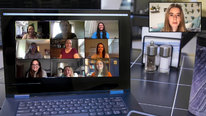
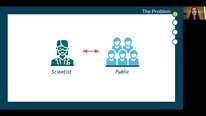
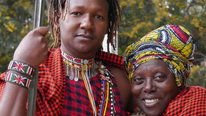
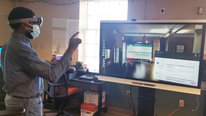
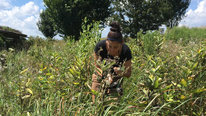
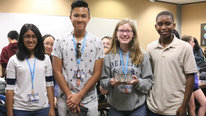
Miyoko Chu
Senior Director of Communications
Welcome to Bird Cams Lab, an online space where participants and scientists co-create scientific investigations and make discoveries using live and archived footage of birds. Bird Cams Lab is now in its final year, funded by NSF. BirdCamsLab.AllAboutBirds.org.
Questions, comments, or ideas? We would love to hear from you about these or any other topics.
In co-created investigations, participants engage not just in collecting data for scientists, but in partnering to generate and select questions, help with study design, explore data, and share results.
Claire Quimby
Paula Ford
This is such a great project! As a former educator, I think it would be amazing to publicize the project to get it into "classrooms" (where they exist these days) and to students, especially those doing their schooling online. This would naturally expand interest into more diverse communities; children get excited about the natural world and bring their excitement home to their families. Community naturalist groups would very likely be interested too. Here in Vancouver, BC our local naturalist group has a division dedicated to birds. I will pass on the info to friends here who belong to various local naturalist groups, for starters.
More people watching and studying bird cams can only improve the general public understanding, appreciation and connection to the natural world, which is so sorely needed.
Claire Quimby
Chip Bruce
Professor Emeritus
I want to join in! Can you say more about any indications of participants' insights about scientific thinking extend to other science arenas?
Claire Quimby
Jennifer Borland
Director of Research Programs
Hi Chip, thanks for your question. We are still analyzing the wealth of qualitative data that speaks to the impacts that the Bird Cams Lab experience has had on participants' thinking about, but there are some quantitative findings that may be relevant. For example, when comparing pre-post responses for participants in the recently completed "Hawk Happenings" investigation we found greater agreement after participation with the statement "I can make valuable contributions to the scientific study of birds." Additionally, roughly 70% of participants "agreed" or "strongly agreed" that the project taught them about the scientific process in general and, more specifically, about how co-created research projects work. It is also important to note that many of our participants have some background in science--either having worked in a scientific field previously, currently working in a scientific field, having studied science, or currently studying science--so that could be a limiting factor to the types of impacts we've been able to discern from qualitative data thus far. It is interesting to note, however, that people who are no longer working/actively studying science frequently reference the personal value associated with being able to actively contribute to science in a meaningful way. Participants have also noted that their experience tagging/classifying data during the data collection phase of each project has also led them to think more broadly about bird behavior, and move past simply identifying birds to thinking more about (and being more knowledgeable about) bird behavior. Another thing we've heard from several participants is the fact that this project has helped them to better understand the entire scientific process and the great amount of work that goes into an investigation at all stages--not just the data collection stage--and this seems to be fostering a deeper appreciation of the scientific process, even in instances where people consider themselves to be somewhat familiar with/knowledgeable about science.
Claire Quimby
Rachael Mady
Nicole Freidenfelds
Great project!
Do any lesson plan materials exist for K-12 teachers to incorporate Bird Cams Lab into their curriculum? As your participant Thea noted in the video, observing the birds is much more engaging than reading about research in a book. I think K-12 students would really enjoy taking part in the co-created investigations.
Claire Quimby
Shihadah Saleem
Benjamin Walters
Joan Freese
Benjamin Walters
Bird Cams Communication Specialist
Hi Nicole—great question! The Cornell Lab's K-12 Education team has developed lesson plans to utilize the cams in the classroom. You can download these "Life in a Nest" lesson plans here: https://www.birds.cornell.edu/k12/life-in-a-nes...
These lessons aren't part of the co-created Bird Cams Lab investigations featured in this project, but there is potential in integrating co-created learning opportunities into the classroom in the future.
Claire Quimby
Rachael Mady
Heather Hopkins
Benjamin thanks for sharing the lesson plan, it is great. There are also ways to incorporate citizen science into the classroom in more informal ways. Nicole, I thought I would share a meaningful experience of mine. I taught 4th grade temporarily for 3 months at an underprivileged school with discipline challenges. We had a campaign to help students identify self-control in their communication and with emotions. I started an emotions check-in session 1-2 times a week that I started with the students watching an eagle nest cam and another involving listening to audio clips of verbal manatee communication. My classroom was full of extremely loud communicators (:P) and I found when I started the viewings, the class would go completely silent and still. I found the students would watch and listen to wildlife behavior and often identify with them on a level that they could relate without me even prompting. Some even gave insight into their family life with observations like, "that manatee sounds as hungry as I was yesterday", or "that crying baby eagle must not know where his daddy is". I wish I had had more time in that position to explore youth emotional connections to nature in the classroom. I know this doesn't relate directly to curriculum but understanding student well-being is vital to classroom management!
Claire Quimby
Tina Phillips
Tina Phillips
Hi Heather! Your experience with the cams is so interesting to me. Over the years I have heard of many teachers using the cams as a way to "settle down" students as they enter the classroom, but hearing the expressions from your students as they watch the cams is so eye-opening, especially when they are sharing personal information. I imagine it would take a skilled educator to navigate those conversations in a way that feels safe for everyone.
We've never really framed the cams as a potential connection to emotional well-being in youth but there is no reason to believe this can't happen. In fact, we hear from many adult participants that the cams bring them solace and joy and even help with depression. As with many NSF projects, we often focus on the outcomes related to science learning and engagement, sometimes at the expense of other equally important outcomes like character development and well-being. Thank you for reminding us that these experiences affect participants in myriad ways and it is our job as researchers and leaders to document and share both the intended and unintended outcomes!
Claire Quimby
Joan Freese
I'm curious if you could share the age range of participants. I'm assuming it was open to all, but who showed up? Thanks!
Claire Quimby
Benjamin Walters
Claire Quimby
Research Associate
Hi Joan - when we averaged demographics for the different Bird Cams Lab investigations, we found that more than half fall between ages 55-74. While there are some enthusiastic younger birders, people under age 35 account for just 10% of participants.
Claire Quimby
Rachael Mady
Benjamin Walters
Benjamin Walters
Bird Cams Communication Specialist
These statistics also reflect the demographics of who engages with Bird Cams content on Facebook, as the majority of our engaged audience is above 55. Our other platforms (Instagram, YouTube) reach a higher proportion younger audiences.
Claire Quimby
Rachael Mady
Nancy Staus
Senior Researcher, STEM Education
As a former ornithologist, I love how this project gets more people involved and interested in birds! As the project progresses, how will you measure the impact it has on both citizen scientists and the scientists at the Cornell lab? What are your measures of success?
Claire Quimby
Jennifer Borland
Director of Research Programs
Thanks for you question Nancy - I really appreciate the fact that you note the potential not only for impacts on participants within the general public, but also impacts on the scientists involved in the project. Admittedly, the evaluation and research plan for this project was more focused on outcomes among members of lay audiences, however we have anecdotally heard from scientists that this experience has changed the way they are thinking about the design and implementation of investigations--including an openness to more input and valuing the potential contributions that can be made by others. Among members of the lay audiences who participate, we are looking for gains in general and specific knowledge (related to birds and science in general), and changes in behavior (including patterns of programmatic participation and other behaviors related to, but not directly a part of, programmatic experiences). These impacts are being studied through analysis of participation artifacts, through pre- and post-participation surveys, and participant interviews.
Claire Quimby
Shihadah Saleem
Sr. Manager of Youth Leadership and Alumni Programs
Very cool video and project, I do like the inclusivity of the approach. In an effort to increase diversity of participants, have you thought about partnering with specific under-served schools to work with teachers and students in a multi-step school-year long project?
Claire Quimby
Rachael Mady
Bird Cams Lab Project Leader
Thanks for your feedback and your idea to increase diversity via partnerships with under-served schools. If we had the chance to test out Bird Cams Lab in a K-12 setting, I think that would be the way to do it. While we focused on tailing Bird Cams Lab to adult informal learners, the research team has repeatedly been excited by the possibilty of Bird Cams Lab in the classroom.
Claire Quimby
Shihadah Saleem
Jennifer Borland
Director of Research Programs
Thanks for your comments and question Shihadah. While formal educators weren't an official target of this project, we did have the pleasure of speaking with many educators (in both formal and informal settings) who happened to be project participants. From them, we learned that many were making use of bird cams and elements of Bird Cams Lab as part of instructional experiences--not only about birds, but also about the scientific process in general. By incorporating cams into their regular instruction, teachers have been able to foster students' observational skills and facilitate deeper understanding of, and appreciating for, environmental science principles. In short, comments from teachers seem to suggest the potential for more formal in-school use of these resources - and I like the idea of that being a way to broaden participant diversity.
Claire Quimby
Shihadah Saleem
Shihadah Saleem
Sr. Manager of Youth Leadership and Alumni Programs
Thank you Rachael and Jennifer for your responses. When my daughter was in 4th or 5th grade her teacher utilized a bird cam website (I can't remember which one) for students to create, investigate and utilize portions of scientific thinking to learn about specific birds. It was also a great way to get the family involved in bird watching, something I never thought to do as a resident of NYC. It was also lovely to have the live cam on during the holidays and have great conversations about our observations.
Rachael Mady
Claire Quimby
Claire Quimby
Research Associate
Thanks for sharing Shihadah! This project has prompted me to start watching the cams with my own daughter and pay more attention to birds in my neighborhood. I've had the (silly?) revelation that birds are EVERYWHERE once you pay attention, and it's cool that you you can do these observations anywhere. Like you said - even in NYC.
Claire Quimby
Shihadah Saleem
Jennifer Borland
Director of Research Programs
I'm so glad that you mentioned the multi-generational appeal of the cams, as that's also something we've learned a little about by interviewing Bird Cams Lab participants. One participant that we spoke with indicated that they had gotten their extended family to participate in tagging data during the data collection phase and found that that gave them a common experience to talk about online since they weren't able to all get together face to face during the pandemic. Another participant who'd recently had her elderly mother move into her home explained that her family appreciated the value of having an engaging activity that they could do together with her within the safety of their home while they were quarantining. We also heard from a handful of participants who'd watched cams or tagged data together with younger relatives (grandchildren, nephews, etc.). Anecdotes such as these suggest the potential of the cams to connect family members across different generations and I'm so glad to hear about your family's experiences too.
Claire Quimby
Shihadah Saleem
Rachael Mady
Rita Hagevik
That is amazing and what a GREAT use of technologies! Especially during a pandemic. This is a great way to keep science going during a pandemic. Technology certainly has always been and will continue to be an equalizer.
Claire Quimby
Rachael Mady
Miyoko Chu
Senior Director of Communications
Thank you for your comment, Rita. Viewership of the cams has risen this year, perhaps related to people being at home more during the pandemic and/or finding the joy and connection with nature during stressful times. Your thought about technology as an equalizer made me reflect on the words of the Cornell Lab of Ornithology's director, John Fitzpatrick: "Science is nothing more than organized curiosity." Just by watching cams, people are naturally observing and asking questions, and that has created an accessible starting point for collaboration. Adding online collaboration tools to that has opened up new forms of access to the scientific process for this online community, regardless of where participants are geographically or whether they have access to the outdoors, a university, or other research environment.
Claire Quimby
Rachael Mady
Christopher Wright
Hi and this sounds like a really great project! I love the co-construction of generating research questions and collectively coding data. I had two questions. First, have you considered the potential impacts that this process could have in k-12 contexts? For instance, one of the participants discussed those have been historically left out of the process and I'm wondering how you see this excellent work as potentially impacting similar issues within k-12.
Next, I see that most of your work was done through the Cornell Lab of Ornithology and you wondered about possibilities for engaging individuals from diverse backgrounds. Have you considered the possibility of reaching out to institutions or organizations, such as science organizations at historically Black colleges & universities (HBCUs) or Hispanic serving institutions (HSIs) and Black Birders Associations? There might be opportunities for collaboration in these kinds of spaces.
Claire Quimby
Miyoko Chu
Senior Director of Communications
Thanks for your questions and suggestions, Christopher. I would love to see if Bird Cams Lab could work for K-12 classrooms or to understand what would need to be adapted to make projects suitable in those contexts. I imagine it could be a lot of fun, and a new way to experience the process of science, for classrooms to observe a cam together and pick their own questions for investigation, or to collaborate with other classrooms around the country. We also want to seek partners who can collaborate with us to create experiences with Bird Cams that are relevant to their communities; thank you very much for the specific suggestions about HBCUs, HSIs, and Black Birders Associations.
Claire Quimby
Jennifer Borland
Director of Research Programs
Thanks for the great comments and recommendations Christopher! While this project wasn't focused on use in K-12 educational contexts, we did heard from many participants who independently incorporated the cams and aspects of Bird Cams Lab into both formal and informal learning experience with K-12 learners. The outcomes of those efforts suggest a k-12-targed iteration of Bird Cams Lab could be a valuable instructional resource/experience.
The team has also brainstormed ways to incorporate more participants form diverse backgrounds (e.g., possibly through connections to groups/organizations (e.g., BlackAFInSTEM and/or Unlikely Hikers) that share interest in STEM and Ornithology. I don't think we'd considered outreach to HBCUs and HSIs. That is a wonderful idea and the recommendation is much appreciated!
Claire Quimby
Alexa Sawa
Thank you for this project. The more people we have participating in science the better. I found Zooniverse when trying to come up with online labs. Now I have A&P students analyzing microscopic images of monkey blood.
Claire Quimby
Benjamin Walters
Bird Cams Communication Specialist
Thanks for commenting, Alexa! That's awesome. Zooniverse continues to be a platform for all types of discovery, and it has been a pleasure working with their team on various investigations. I'm happy to hear that your utilizing their projects in the classroom.
Claire Quimby
Kimberly Arcand
I loved seeing how you're taking these cameras to the next level. Curiosity is what drives science, and this project pushes us all forward from this initial curiosity to actual contribution to real science.
Claire Quimby
Jennifer Gil
I really enjoy this video! how beautiful are the birds. The participant looks so happy to be able to be part of the research.
Claire Quimby
Jennifer Borland
Director of Research Programs
Thanks for your comment Jennifer. Having spoken to dozens of project participants over the lifetime of this project in series of participant interviews, I can attest to people's happiness and enjoyment from this project. As a long-time informal science project evaluator I've often seen engagement, but this is a project where I've seen a consistently high level of passion among participants. This experience has given people a unique opportunity to more fully engage in the scientific process and contribute to scientific discovery - and it has given them something safe and stimulating to do while they've been stuck at home for most of the past year. Thanks again for stopping by to take a look at our video.
Claire Quimby
Shihadah Saleem
Sr. Manager of Youth Leadership and Alumni Programs
I'm hoping much of these observations can be scientifically documented and useful. Are the scientists/researchers involved able to utilize, save and archive "worthy" observations of participants towards possible longitudinal studies?
Claire Quimby
Miyoko Chu
Senior Director of Communications
Thanks for your question, Shihadah! We enable anyone to download the data sets so participants can analyze do further explorations on their own if they wish. Although our project was focused on creating a proof of concept system, there is potential to extend the methods and technology to long-term wildlife cam networks, and if this happened, longitudinal studies could yield some interesting insights over time. For example, participants may log what kinds of prey seabirds or Ospreys are bringing to their nest, indicating how fish populations may be shifting in response to climate change or other factors through the decades.
Claire Quimby
Shihadah Saleem
April Bartnick
What a neat project. Citizen science is such a great way to reach out and get the public involved. I like what Jessica said about people on all levels can come together and have an impact. Accessibility, inclusive education, and activism are what citizen science is all about. Awesome video... thank you!
Claire Quimby
Delbert Penner
Nice video. I enjoy taking part in these projects.
Claire Quimby
Miyoko Chu
Senior Director of Communications
Thank you for contributing, Delbert!
Claire Quimby
Patricia Montaño
What a great project! I love how you have been able to break those silos and have people involved in many parts of the scientific process. I want to join in too!
Claire Quimby
Benjamin Walters
Bird Cams Communication Specialist
Thanks for your comment, Patricia. It has also been interesting to see how participants interact differently with the various stages within an investigation. We've had a number of super contributors that are really invested in the project from beginning to end, and then we have participants that may only be interested in certain aspects, like data collection or question asking. Were excited to dig deeper into these different phases of participation and how they related to learning outcomes during the final evaluation.
Claire Quimby
Meredith Hayes
What an interesting project! Thank you for sharing. Is there somewhere we could learn more about the instruments you used for surveying participants?
Claire Quimby
Jennifer Borland
Director of Research Programs
We plan to include copies of our instruments along with reporting that is forthcoming this summer. Each set of surveys (administered at the start and end of each co-created research experience) has included questions about participants' behaviors and beliefs related to bird cams, citizen science experiences, and co-created research. The surveys have also incorporated a series of knowledge questions that relate to the specific birds being studied in each investigation as well as questions that explore participants' understanding of the scientific process (e.g., making observations or developing questions that can be answered effectively through scientific investigation). If you email me at jennifer@rockman.com I would also be happy to share survey instruments with you via email.
Claire Quimby
Deborah Marisi
I think that it is so important for our children to gain awareness of the environmental happenings going on around them. Let's face it, how many people take for granted this beautiful earth we have been given? Gaining their interest by making them aware of what happens in bird world during the spring will help engage their interests and aid them in developing an appreciation for our environment.
Claire Quimby
Shihadah Saleem
Jennifer Borland
Director of Research Programs
That's a great point. Many participants have commented on the important role that studying birds via bird cam investigations can have on people's appreciation for nature. Additionally, many participants have noted the ability of these investigative experiences to help people understand the impacts of environmental changes on wildlife - which can, in turn, foster greater interest in environmental stewardship. Many participants have also noted that they have moved beyond an interest in merely identifying different types of birds to being more knowledgeable and interested in bird behavior. When they watch their own feeders or see birds elsewhere, they are more inclined to observe the types of things that the birds are doing - and have more knowledge with which to interpret some of the behaviors they are seeing. So yes, in short, this experience does seem to have impacts on participants' understanding and appreciation for birds and the environments we share with them.
Claire Quimby
Shihadah Saleem
Manoj Kumar
Bird cam project is an eye opener for many including me.
In my opinion it is a great idea and we should expand it to other continents where ever it is possible.
I regularly watch these cams , specifically of that of Californian condor, albatross, feeder cam at cornell, osprey and panama feeder cam.
By seeing all these we come to know the intricacies of breeding life of these birds.
Is there any way by which we can also involve with it and install such cams in our University campus during breeding seasons of birds here in Northern India for research purposes.
Claire Quimby
April Bartnick
Manoj Kumar
Charles Eldermire
Bird Cams Project Leader
Hello Manoj—
Thanks for your enthusiasm! We can send along some general information about how we go about setting up our livestreaming cameras and some things to keep in mind—please send an inquiry to birdcams@cornell.edu and we'll reply. Thanks again!